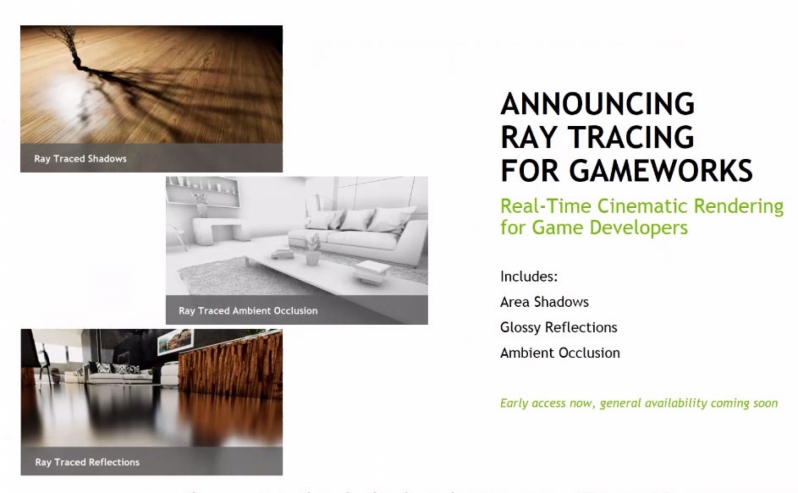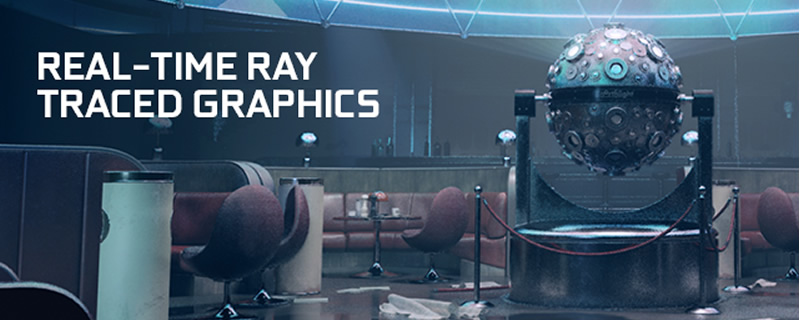Nvidia reveals their RTX Raytracing Technology alongside new GameWorks modules
Nvidia reveals their RTX Raytracing Technology alongside new GameWorks modules
Using RTX Nvidia plans to offer film-like visuals in real-time, providing a speed boost of 2-3 times that of Microsoft’s DXR Compute Shader/software path. The catch here is that RTX technology is only supported on Nvidia Volta GPUs, leading many to believe that Nvidia is using Tensor cores for Raytracing acceleration, which means that this AI hardware may have a future in gaming-oriented graphics cards.Â
DXR will run on all DirectX 12 hardware using its software path, though it is clear that hardware acceleration is required to offer an optimal experience, at least regarding computational efficiency. Right now it is through that RTX technology uses an AI algorithm to utilise a feature called to denoise a Raytraced image, allowing fewer rays of light per pixel to be used to create a similar visual result. Nvidia is basically using AI to deliver an accurate approximation of what a fully raytraced image would look like, saving a lot of computational power.Â
Below is a Ray Tracing Demo that Remedy Entertainment has created, utilising RTX technology to offer some highly detailed visuals.Â
 Â
Nvidia’s RTX Technology will also have a GameWorks component, all of which are based on Microsoft’s DXR extensions. Using Ray Tracing developers can create higher fidelity shadows, reflections and ambient occlusion than ever before, simulating light rather than using visual tricks to offer a decent approximation of real-life. Â
Below is a comment from Max McMullen, Microsoft’s development manager of Windows Graphics and AI at Microsoft, discussing the game-changing nature of Ray Tracing and their partnership with Nvidia.Â
   DirectX Raytracing is the latest example of Microsoft’s commitment towards enabling developers to create incredible experiences using cutting-edge graphics innovations. Our close partnership with NVIDIA on DirectX Raytracing and NVIDIA’s RTX technology brings real time ray tracing closer than ever for millions of gamers on Windows. Â
 Â Â
 Â
While RTX sounds like a proprietary add-on for DXR Raytracing, it isn’t. Think of RTX as Nvidia’s brand name for accelerated ray tracing, as AMD can create their own acceleration technique for ray tracing within DXR.Â
In the meantime, it is likely that Ray Tracing will only be used sparingly in the near future, given the compute-heavy nature of the feature and the lack of hardware acceleration on modern graphics cards. Right now only the Titan V has support for RTX, making it exclusive to a $3,000 graphics card.Â
If any form of Ray Tracing is to be used in any games in the near future, it will be used sparingly, given the nature of today’s hardware.Â
You can join the discussion on Nvidia’s RTX Technology on the OC3D Forums.Â



